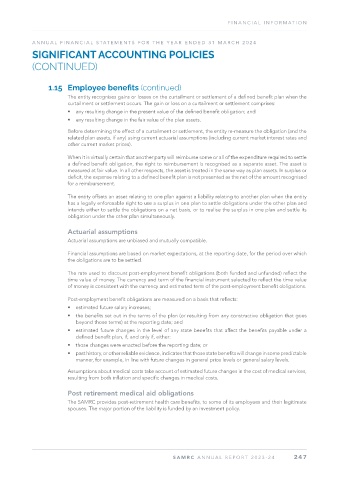Page 249 - SAMRC Annual Report 2024-2025
P. 249
PFMA COMPLIANCE REPOR T
2025 2024
TRADE TRADE DEFERRED COMMIT- TRADE TRADE DEFERRED COMMIT-
RECEIVABLES PAYABLES INCOME MENTS RECEIVABLES PAYABLES INCOME MENTS
Dept. of Science and
Innovation (DSI) – – 168,841,896 None 7,153,574 192,350,052 None
African Health
Research Institute – – – None – – – None
Caprisa – – – None – – – None
Hutchinson Centre
Research Institute
of SA – 223,400 – None None
National Research
Foundation – – 2,923,977 None – 4,721,375 3,288,920 None
North West University – – – None – – – None
Public Health
Association of
South Africa – – 1,928,405 None – – 748,108 None
Tertiary Education
and Research
Network of
South Africa – 318,100 – None – – – None
University of
Cape Town 629,391 10,202,364 775,307 None 2,683,206 8,126,134 395,073 None
UCT Lung Institute – – – None – – 0 None
University of
Limpopo – – – None – None
University of
Pretoria 3,270,062 350,000 – None – – None
University of
Stellenbosch 90,097 5,727,269 – None 831,319 3,400,608 – None
University of
South Africa – – – None – 1,721,470 – None
WITS Health
Consortium – 2,097,043 – None – 4,232,204 – None
Lubombo
Spatial develop – – – None 172,082 – – None
GARDP – 1,284,023 – None 576,298 – – None
University of
Fort Hare – – – None 159,407 30,000 – None
University of
Free State – 4,852,964 – None – None
University of
Kwazulu-Natal 1,193,856 1,147,014 – None – 1,539,008 – None
University of
Witwatersrand 3,324,824 598,000 – None 0 1,233,474 17,378 None
TOTAL 8,508,230 26,800,177 174,469,586 11,575,886 25,004,273 196,799,531
SAMRC ANNUAL REPOR T 2024-25 247

